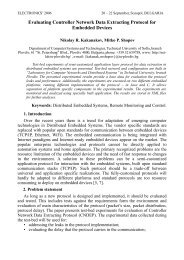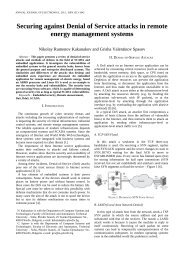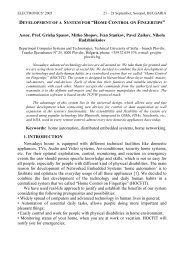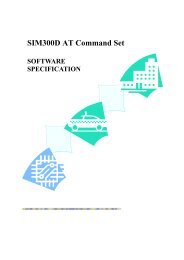CGI-based applications for distributed embedded systems for ...
CGI-based applications for distributed embedded systems for ...
CGI-based applications for distributed embedded systems for ...
You also want an ePaper? Increase the reach of your titles
YUMPU automatically turns print PDFs into web optimized ePapers that Google loves.
International Conference on Computer Systems and Technologies - CompSysTech’2004<br />
the measurement block. This transfer of data is carried out with a block of shared memory.<br />
The measurement block writes data in this memory and the <strong>CGI</strong> task reads and use this<br />
data. There will be a problem if the two tasks address this block of memory at the same<br />
time. To avoid this problem and synchronize the work of the two tasks a semaphore is<br />
used. When one of the tasks gain access to this memory it reserves a semaphore and<br />
after it finishes its work it release the semaphore (figure 5). When one of the tasks tries to<br />
reserve already reserved semaphore the RTOS makes this task wait.<br />
Figure 5. Using semaphores in sending measurement data to <strong>CGI</strong> task<br />
Semaphores are a way of synchronization between processes that relies on the<br />
operating system. The RTOS of the IPC@Chip has API functions <strong>for</strong> creating, reserving<br />
and releasing of semaphores. It can supply up to 60 semaphores at the same time.<br />
For controlling the parallel execution of this task a small program is written. This<br />
program read initialization data from files on the controller memory, installs and uninstalls<br />
the <strong>CGI</strong> processes, declares a semaphore from RTOS and frees it, releases the unused<br />
memory and stops the unneeded tasks. The other purpose of this program is to allow<br />
adding a serity to the project using identification and authorization.<br />
- I.6-5 -








